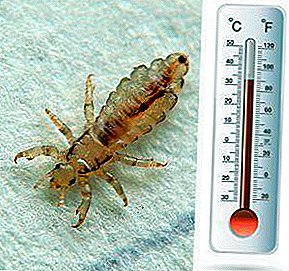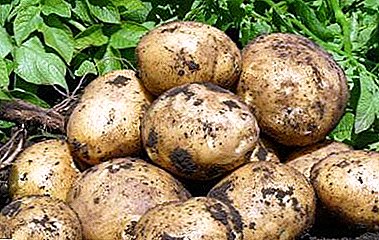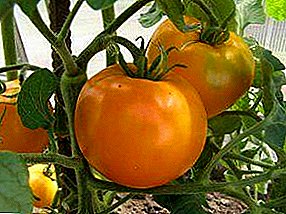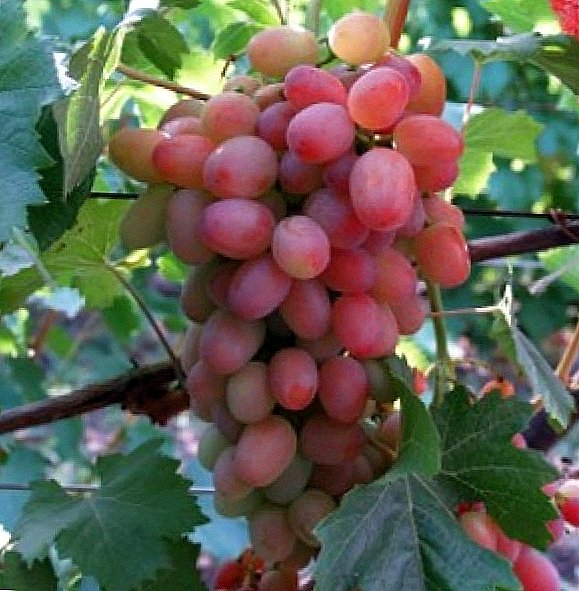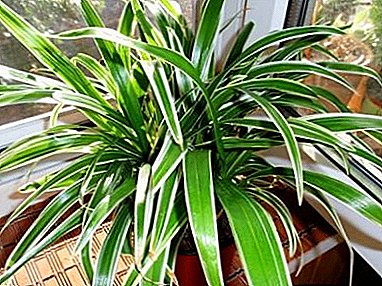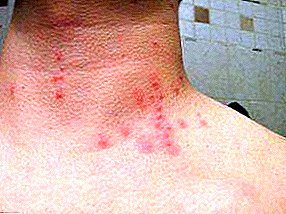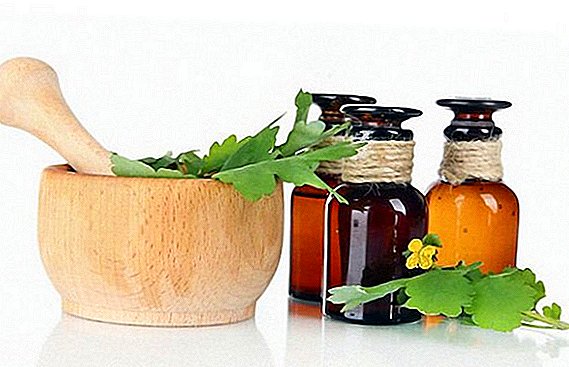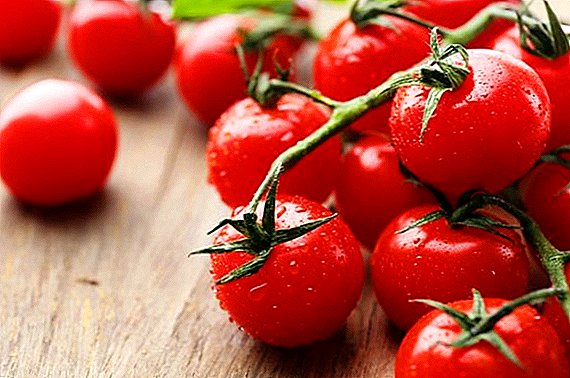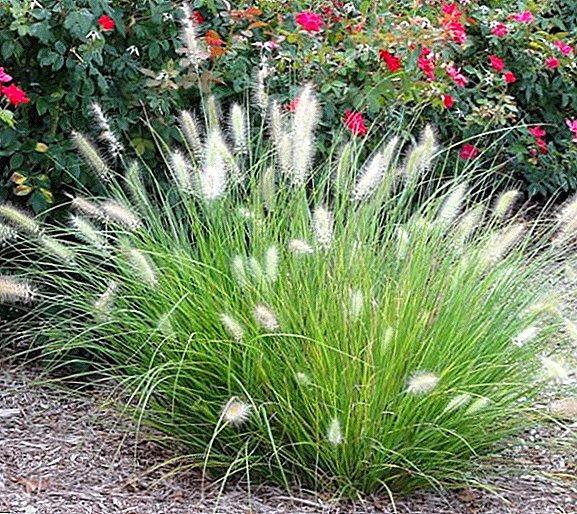 In many areas near the houses, one can notice spiky plants. These are decorative cereals. They are not as attractive as flowers, but they are well complemented by many landscape compositions, and they are also less demanding in their care. About one of these cereal plants and tell in our article.
In many areas near the houses, one can notice spiky plants. These are decorative cereals. They are not as attractive as flowers, but they are well complemented by many landscape compositions, and they are also less demanding in their care. About one of these cereal plants and tell in our article.
Botanical description
Most members of the genus Pennisetum are perennial plants, but have turned into annuals in cool climates. Shrubs grow in height from 15 to 130 centimeters. Some species can reach two meters.  It grows very quickly, forming thickets of spherical shrubs. They have straight naked stems, lanceolate foliage, concentrated at the base of the plant. At the end of a long stalk trim neat lush spikelets.
It grows very quickly, forming thickets of spherical shrubs. They have straight naked stems, lanceolate foliage, concentrated at the base of the plant. At the end of a long stalk trim neat lush spikelets.
They can be white, pink, greenish, burgundy, gray shades. In some species, under the weight of spikelets, the stems bend down to the ground.
Did you know? The Latin name of the genus Pennisetum is obtained by merging two words: penni, which means feather and seta - bristle.
Distribution and habitat
Pennisetum, or plist, is a genus of heat-loving plants. His homeland - the tropical and subtropical zones. Sometimes it can be found in a moderately warm zone. Most often found in Africa and South America. From there, spread across the globe.
Popular types of pennisetum
- Perennial bush. In temperate climates it grows as one year old.
- Cereal can be found in the Caucasus, Front and Central Asia, Pakistan, India and Northeast Africa. Loves stony slopes.
- The bush grows to 15-80 centimeters.
- Spike 4–15 centimeters long, dense, with rough setae. Accepts shades from pink to purple.
- It blooms at the end of summer.
- Frost-resistant

- Homeland plants - Australia and East Asia.
- It is a perennial plant.
- Spikelets grow in length from 40 to 100 centimeters. Soft, fluffy. Their color range is from purple to red-brown.
- The foliage is narrow, green. By the fall it becomes yellow.
- The grass is blooming at the end of summer. Decorative keeps after the period of flowering.
- Frost-resistant plant. Low temperatures tolerate easily, if it is covered with fir branches. In order for the grass to recover faster after winter, its foliage needs to be cut off with the arrival of cold weather.

Important! If the winters are very cold in the region, the bush will be reduced every year. Soon it will have to be replaced with a new one. If you want to save the plant, then for the winter it is better to replant it in a pot and bring it to a warm room.
- Perennial, growing to 30-60 centimeters.
- It grows in East Africa. Not bad gets accustomed in Baku, Ashgabat, Tashkent. It can grow in southern Russia. In temperate climates it is best to grow in pots.
- Loves rocks and stony slopes.
- Bush reaches 40-50 centimeters.
- Panicle small, thick, 3-10 centimeters long, golden brown.
- Flowering falls at the end of summer. Cereal blooms for about a month.

- Massive dense perennial shrub growing up to two meters in height. In temperate climates it grows as an annual.
- The leaves are broad, bronze-burgundy color.
- Spikelets dense, massive, up to 40 centimeters long.
- The beginning of flowering falls in the middle of summer and lasts until September.

- Perennial, growing to 70-130 centimeters in height. It grows thick bushes.
- The leaves are narrow, long, flat, dark in color. Stems and spikelets are also dark.
- Flowering occurs in the second half of summer - the beginning of autumn.
- Panicles are quite beautiful, so they are often used for forming bouquets.
- Frost tolerates poorly.

- The most frost-resistant representative of the plastics, as a native of China, the Himalayas.
- It grows up to 120 centimeters.
- Stems erect. The leaves are narrow, long, gray-green color.
- Spikelets appear in June. Their color varies from light green to yellow-brown with the approach of autumn. They are thin and long, not too noticeable.
- He loves the sun.
- The soil is not picky.

Important! This type of pennisetum is an aggressive plant (it destroys all neighboring plants). But it can be limited and planted in the curb.
Use in landscape design
In landscape design, pennisetum perfectly performs the role of a background and also looks good in some compositions. With their help, you can decorate the shore of the reservoir, planting bushes among the large stones. Having inclined its leaves and spikelets to the water, the pennisetum will add naturalness to the landscape.
With the help of grass, you can shade green areas, create contrasts and smooth transitions when designing flower beds. Well fit into floral arrangements, blooming continuously. It is possible to create a flower garden from the peristhistates, having landed one species in a flower bed or arranged several different ones.  From the lush dense bushes, planted close to the arc to a friend, you can create a hedge or arrange border. The grass in the compositions of alpine slides will look great.
From the lush dense bushes, planted close to the arc to a friend, you can create a hedge or arrange border. The grass in the compositions of alpine slides will look great.
Learn how to make a bed of stones or wheel tires, as well as how to make an alpine slide with your own hands and what flowers are suitable for it.
The peristoshchetininnik in landscape design is good in that it looks great in any composition and is not fastidious about the soil.
Most of its species loves the stony soil of the slopes, so with its help it is most advantageous to strengthen the land on the slopes of the hills.
Growing and caring for a plant with your own hands
In order for the plant to be able to please the eye longer, it needs proper care. We will tell about its subtleties below.
Conditions of detention
The plant loves the sun, so it needs to be planted in well-lit areas. If your climate is hot, then you should choose a place where there is a penumbra. In addition to this, the plot must be protected from drafts.
If you plant the grass with seeds, they can be sown in open ground from mid-May. It is possible to plant seeds in containers for seedlings. This procedure is carried out in April. The plant is transplanted to a permanent place when the spring frosts go away. 
Soil and fertilizer
Pennisetum is not demanding to the ground. Can grow on dry or moderately dry ground. Strongly dry and dense soil is not suitable. The best option is a moist, breathing, drained soil containing a sufficient amount of humus.
If the earth is dense, then it should be loosened and weeded. In the summer it is necessary to make organic and mineral fertilizers.
Familiarize yourself with the use of such mineral fertilizers as: Plantafol, Sudarushka, Azofoska, Kristalon, Ammophos, Kemira and Master.
Watering and moisture
If the rainfall in your area is not enough, so that the soil was wet all the time, then watering should be regular.
But do not allow the overmoistening of the soil, as this is detrimental to the plant. Drought also adversely affects the growth of grass.
Reproduction and planting
Pennisetum can be grown from seed and vegetatively (dividing the bush into parts).
Seeds
Seeds can be sown immediately in open ground or grown from them seedlings. In the first case, landing occurs in the month of May, when spring frosts take place.  In the garden, choose a place well lit, protected from the winds. The land should be fertile and drained.
In the garden, choose a place well lit, protected from the winds. The land should be fertile and drained.
Read also about the composition, properties and types of soil, as well as learn how to improve soil fertility.
The seed is slightly buried in the ground, not sprinkled on top. After planting, watering the plant comes from the spray gun. When the first shoots appear, it is necessary to thin out the crops a little. Sprouted and mature shoots are transplanted to a permanent place at a distance of 50-90 centimeters from each other.
Sowing seeds for seedlings is carried out in April. Seeds are deepened into special containers or pots with fertile soil. Verify covered with foil. Watered from a spray bottle. For seedlings to appear, seedlings should be placed under the lamp for several hours a day. At room temperature after seven days, the first shoots will appear.  When a young plant is 10 centimeters high, it can be planted in a permanent place in the open soil, provided that the spring frosts have passed. Bushes are planted at a distance of 50-90 centimeters from each other.
When a young plant is 10 centimeters high, it can be planted in a permanent place in the open soil, provided that the spring frosts have passed. Bushes are planted at a distance of 50-90 centimeters from each other.
Important! Do not allow the root to be exposed when transplanting plants. Because of this, seedlings are best grown in small containers, so that you can land the grass with the ground.
Vegetative
It will not be difficult to divide the pennisetum bush into parts, since the grass grows very quickly and new shoots appear all the time. The division of the plant should be carried out in the spring. The young shoot is pinch off along with the root system and put on a place prepared in advance.
Just planted bushes take root pretty quickly. May begin to bloom a couple of months after transplantation.
It is impossible to divide a bush into very small parts and not more often than once for five years. 
Relation to temperature
All thermophilic varieties grow as annuals. If you want your bush to grow for more than one year, then you need to plant it in pots and bring it into a warm room for the winter. Here it must be placed in a well-lit place.
If the peristoshchetinnik variety is frost-resistant, then it can be grown in open ground. With a decrease in temperature, it is covered with coniferous branches, bark or peat. To wake up the plant from hibernation in winter, with the advent of spring it is cut.
Did you know? The bristly peristhistoinist began to grow as an ornamental plant in the second half of the XIX century in North Africa.
Possible difficulties in growing
The only difficulty in growing pistoshchetininnik - in our climate to ensure that the plant grew as a perennial. Due to the fact that the cereal is thermophilic, after a cold winter it dies.
Therefore, it should be grown in pots and transferred to the room with the arrival of cold weather. This is quite troublesome. 
Pests, diseases and prevention
Pennisetum is not afraid of disease or pests. With severe frosts and poor shelter, the plant may freeze and die in the middle. In this case, the rest of the bush transplanted to a new location.
Sometimes aphids and mites appear on the bush. You can drive them through the water pressure when watering. For the prevention of acceptable spraying plants with soap and water.
Read more about the types of spider mites, as well as how to deal with them.
Each type of pennisetum is attractive in its own way. But all of them are in perfect harmony with the surrounding landings in any landscape design. From them it is possible to create both separate compositions, and to add already existing ones.


